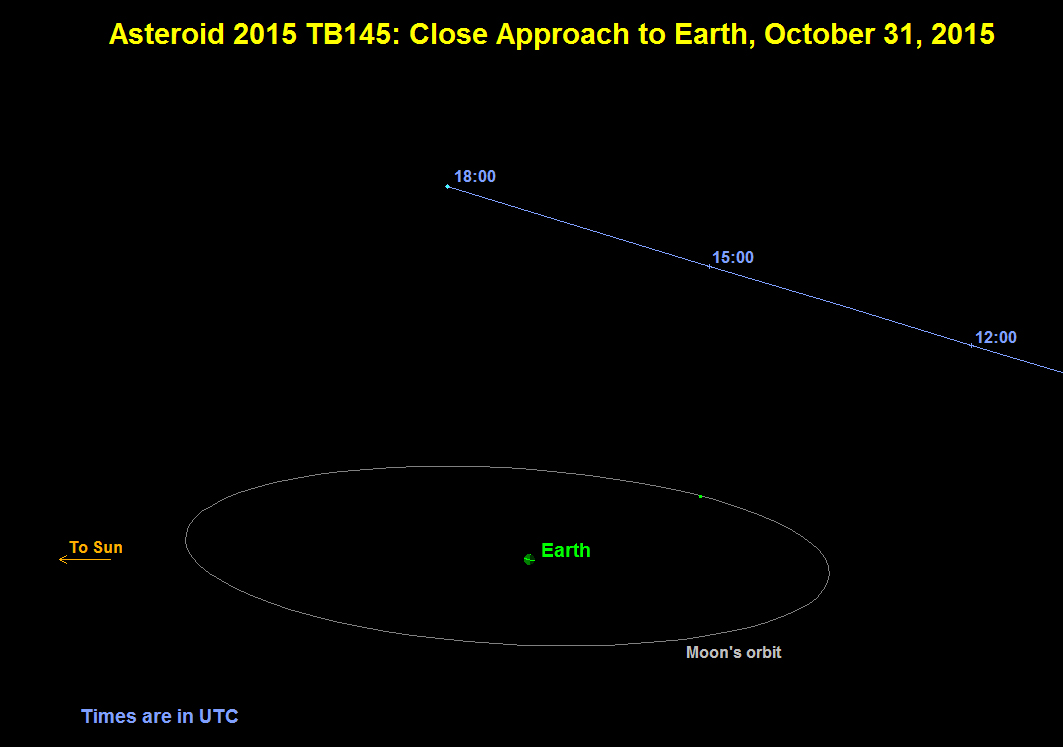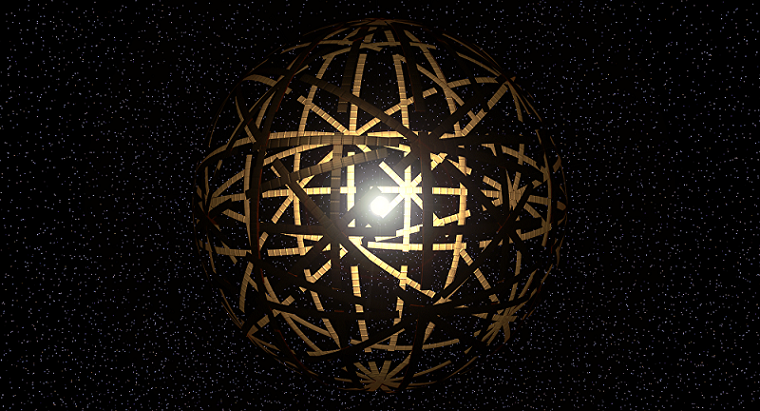
© NASA/JPL-CaltechThis graphic depicts the orbit of asteroid 2015 TB145 as it flies past Earth on Oct. 31, 2015.
The roughly 1,300-foot-wide (400 meters)
asteroid 2015 TB145, which some astronomers have dubbed "Spooky," will cruise within 300,000 miles (480,000 kilometers) of Earth on Halloween (Oct. 31) — just 1.3 times the average distance between our planet and the moon.
Though 2015 TB145 poses no threat on this pass, the flyby will mark the closest encounter with such a big space rock until August 2027, when the 2,600-foot-wide (800 m) 1999 AN10 comes within 1 Earth-moon distance (about 238,000 miles, or 385,000 km), NASA officials said.
Astronomers plan to beam radio waves at 2015 TB145 on Halloween using a 110-foot-wide (34 m) antenna at NASA's Deep Space Network facility in Goldstone, California, then collect the reflected signals with the Green Bank Telescope in West Virginia and Puerto Rico's Arecibo Observatory.
Such work should reveal key details about the space rock's size, shape, surface features and other characteristics — including, perhaps, its true identity.
"The asteroid's orbit is very oblong with a high inclination to below the plane of the solar system," Lance Benner, of NASA's Jet Propulsion Laboratory in Pasadena, California,
said in a statement.



Comment: 'Sudden structural failure' sounds plausible, but it's unlikely that this plane's 'weakness' alone would have caused it to crash so spectacularly. As the author points out, "would have been rigorously inspected then and during subsequent maintenance checks."
Information is still coming in, and what has been shared publicly thus far only gives rise to more questions. That the crash involved a Russian plane and that it went down in a region teaming with military and paramilitary would suggest that this was a deliberate act by some unknown party.
However, for now Sott.net is leaving it open that this crash could have been the result of a natural, albeit unusual, catastrophic event, perhaps like the airburst that sent the Indonesia AirAsia Flight 8501 into the Java Sea in December last year.
Whatever happened to this Russian-owned plane, it's definitely something more than just the result of a structural weakness. Some kind of tremendous force knocked that plane out of the sky.